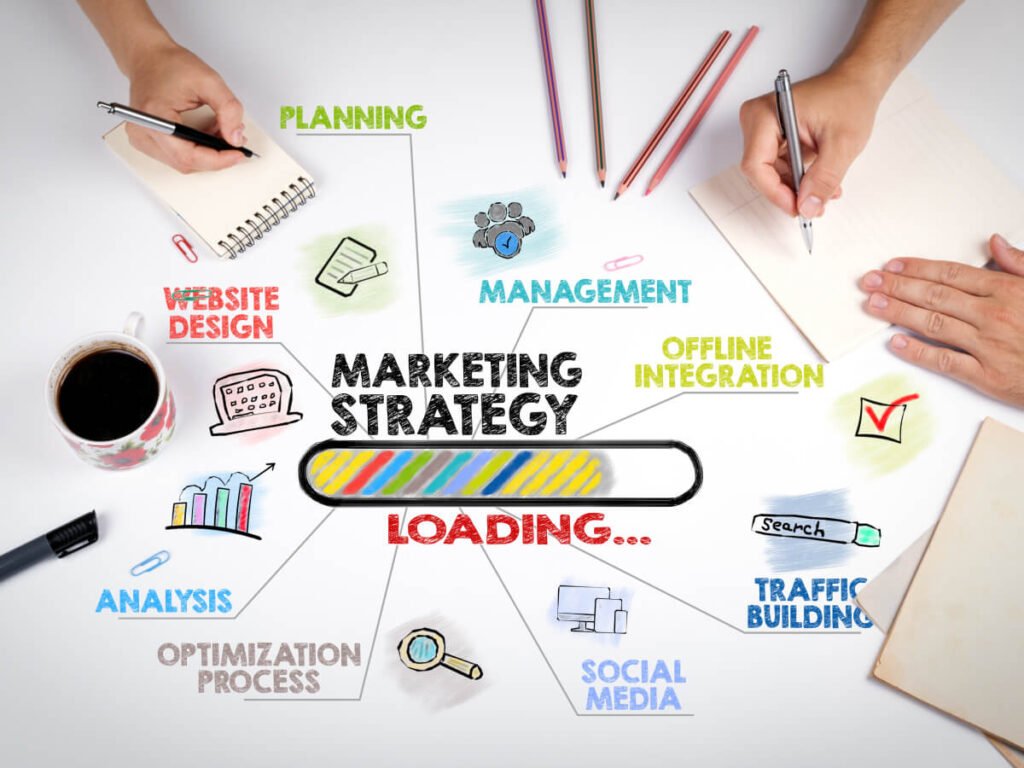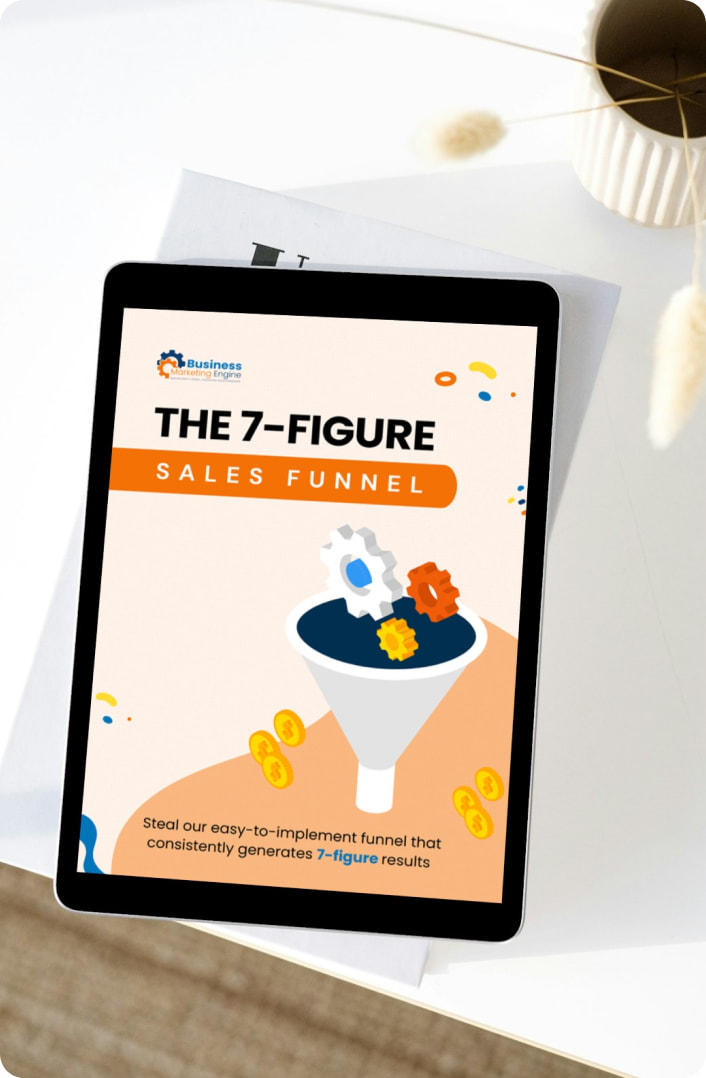We’ve been hit several times in the Midwest with several different severe and snow watches, advisories, and warnings in the past week, with heavy snowfall and low visibility over the weekend and sub-zero degree windchill last week. Growing up in these conditions, my dad reinforced the need to make sure each part of our vehicles was working correctly to avoid problems during a potential crisis situation. As a teenager, it held little importance when I was going to work, school, or hanging out with friends; as an adult, I can appreciate it when all of the components are working together — in a car engine, or in a marketing engine.
Think of your company as a car. While it’s important for the battery to be charged, the headlights and turn signals to be functional, and the heater to kick on — especially in the winter — the engine is the most important part of the car. It converts fuel into energy, propelling your vehicle forward. A marketing engine takes all of the pieces of your marketing efforts and converts them into fuel to move your company forward.
As Peter Drucker mentioned, business has two functions — marketing and innovation. Innovation is what puts you in business; marketing is what keeps your business going by creating customers and generating results.
“Marketing,” he said, “is the distinguishing, unique function of the business.”
Putting a detailed marketing engine in place is the key part that pulls every other marketing system you’re running into one cohesive, strategic, propelling effort.
Why You Need a Marketing Engine
More than 100 sub-specialties exist in the world of marketing; those can be broken down even further. Look at the biggest areas that lie just in content marketing:
- Social marketing
- Blogging
- Podcasts
- SEO
- Mobile marketing
Specialists and professionals work in each of those fields, concentrating all of those efforts into making sure the work is being completed efficiently and effectively. Think of each sub specialty as a cylinder in your engine. Whether you have a four-, six-, or 12-cylinder engine, you have different components working together in harmony to power your car. Not all of them are operating at the same power, all of the time, but each cylinder is important.
In the cylinder world, in addition to working specialist in those areas, you can also find large companies with staff designers, editors, and copywriters. However, many small and medium businesses don’t have the financial capabilities to build such a large marketing team. Putting together a marketing engine typically includes inbound marketing, content marketing, and automated marketing, but can also pull in other marketing specialties.
A marketing engine is the key to pulling each individual department together in practical path to a variety of benefits for your business:
- Stay current on top trends: A marketing engine typically includes a level of research for many different pieces of information. Keeping tabs on news and events through content research can help you generate timely, relevant pieces of information. Monitoring the efforts made by your competition can help you strategically develop campaigns. Learning about your customers will give you the ability to identify your target audience members.
- Build your brand: Brand awareness involves more than designing a logo, picking a typeface, and writing a slogan. Branding shares what your business values and how they line up with the values of your customers. It creates an image and voice that can be used across a variety of media types, and helps you become recognizable by potential and current customers. Looking at this checklist for brand building can help you find what you might need in a marketing engine.
- Strategic growth: Hopefully, you’ve taken the time to look at and start to use a marketing plan template. The Content Marketing Institute notes that tool, among several others in the planning stage is the “‘reality bridge,’ as it describes the actions necessary to take your content marketing program from its existence as a lofty strategic ideal to its realization as a fully functional and productive content marketing engine.” From creating editorial calendars to appointing tasks to team members, these plans lead to the next step — what the CMI calls the “doing phase” — the creation of your business marketing engine.
A Glimpse at a Successful Business Marketing Engine
In the early 2000s, General Electric had no marketing strategies or plans. The company’s belief in the quality of its products was so strong that marketing was far from making the company’s list of areas needing attention.
“At best it was considered a support function, at worse, overheard,” Harvard Business Review published in a 2010 article written by General Electric leaders and a professor at Harvard Business School. Within some highly nuanced fields, like GE Aviation, there was little value placed in marketing and market research. However, the industry was shifting, and company leaders realized that if they were going to keep up with these changes, they may need to take a new look at marketing.
The articles authors noted that if GE were to succeed, the company “would need a marketing engine that drove more direct collaboration with customers and led to markets — one with standards as rigorous as those for functions such as finance and human resources.” With a goal of organic growth and expansion, GE needed to build a team that would be able to coordinate and calibrate each and every marketing effort. They created a framework that was based on principles, people, and process.
The engine that was created by the company helped to place marketing at the front of the company’s future plans, as they realized that technological innovation wouldn’t be enough to carry the company into a long and sustainable future. They were able to integrate, and continue to maintain, new platforms for reaching out to customers and prospects, and, have gained significant momentum and traction in their expanding industries.
Through their three-pronged marketing engine, GE is seeing definite results and growth, not only in creating new programs, but raising awareness about the company’s traditional product lines.
The work has paid off, with one marketer in 2014 calling GE the smartest and most strategic brand in social media. He notes that their efforts are pulling television and visual advertising, crowdsourcing and open challenges, Snapchat and other social media platforms, and relevant, interesting content to humanize their brand and share the impact they make in a variety of different industries.
Building Your Marketing Engine
Beyond orchestrating a united message, a marketing engine generates a path for continuous engagement with target audience members and customers by providing them with timely information, relevant content, and valuable conversation from your company when it’s most needed in their lives.
Before you begin to put together a marketing engine, start at the top. Whether it’s from department heads, senior leadership, or partners, executive support is key to putting together a strategic business marketing engine. Start with the benefits of a well-developed tool that works with the organization’s overall strategy.
Once everyone is on board, it’s time to figure out where your online marketing will be housed. Most people choose their Web site, since it’s going to be the most extensive and complete location for all of the company’s pertinent information. Not only will it be the address for your blog, contact, product, and pricing information, it will be the focus of search engine optimization, social media calls to action, and pay-per-click advertising. With many tools now available, including a variety of free WordPress themes, it can be possible to get a Web site up and running in less than seven days.
Of course, once the Web site is live, you’ll need to continue posting fresh, timely content that connects your readers to your brand. Blogging is a fantastic way to increase your organic search engine ranking, in addition to building a strong look at your brand and establishing yourself as a thought or opinion leader.
- Find your company’s voice: Will you be more casual, and focus on day-to-day life and relating your product or service to the average consumer? Or is your business a highly specialized field where you’ll be selling to a field with a certain level of training or knowledge?
- Pick your content topics: Research your company’s top keywords. Curate content from other sources, but personalize it to meet the needs of your business. Work with skilled writers and researchers who can quickly and thoroughly produce accurate, information-packed pieces.
- Shake it up: One study found that company Web sites with updated blogs get 55 percent more visitors, 97 percent more inbound links, and 434 percent more indexed pages than Web sites without a blog. However, evergreen content, like authority guides, how-to manuals, and ultimate lists, have a longer lifespan as they aren’t tied to a certain event or date. They address a need and attract attention — and lots of it. Search Engine Watch compared their site’s stats to the numbers from their sister site, and found that there was much more recurring traffic from articles (evergreen content) than in the blogs from the sister site.
- Consider infographics: These pieces pair visual graphics with your content, and are retained longer than straight text, are liked and shared more often than text-only content, and are becoming easier to create, with tools like Canva.
Your engine also needs to factor in social media, SEO, advertising, and e-mail campaigns. You may want to consider an automation tool. Using tools to schedule social media posts in advance, to send e-mails based on events or page visits, to target communications across various channels, and to track and record data from visitors.
Once you know what needs to be done, figure out who will do which piece and when. Develop and standardize procedures and processes to create a functional workflow with no bottlenecks. Various companies have created software and tools to manage projects, with some as software and others available with Cloud-based options. Create an editorial calendar, starting with holidays and important corporate days, incorporate internal deadlines and dates, and consider creating a corporate style guide that includes your logo, color and font choices, appropriate wording and placement and usage guidelines.
The last piece of your marketing engine is learning what to do with the data you’ve acquired. When you create your Web site, install an analytics program like Google Analytics, which will track visitors, page information, and more. Social media dashboards often include detailed analytics about your account. Decide which key performance indicators you want to track, and start to watch the data that is created. As you learn what your followers like and what they avoid, you’ll learn how to meet their needs even more closely.
Scaling Your Marketing Engine
The biggest benefit of a marketing engine for your business is that it’s scalable. At any size, your marketing engine should be built and designed to meet the current needs your business is experiencing. A larger company will have greater resources for hiring and putting together a team designed to fill editorial, design, and specialist roles; small businesses, especially those just starting, might not have that advantage.
The most important part of your marketing engine is that it is usable. There’s no point in putting together a strategic plan that you can’t implement. Look for actionable steps you can take and implement today that have room for growth. Automation tools should offer space to expand and allow for additional contacts as you begin to generate traffic and interest.
What are the biggest barriers to create your marketing engine, and how are you addressing them? Let me know and we’ll go into more detail to help you get the best results.
Business Marketing Engine has created more than 21 different solutions to meet the needs of companies of all sizes.
Contact us today for a free consultation to see how we can help you build your marketing engine and move your business forward.








